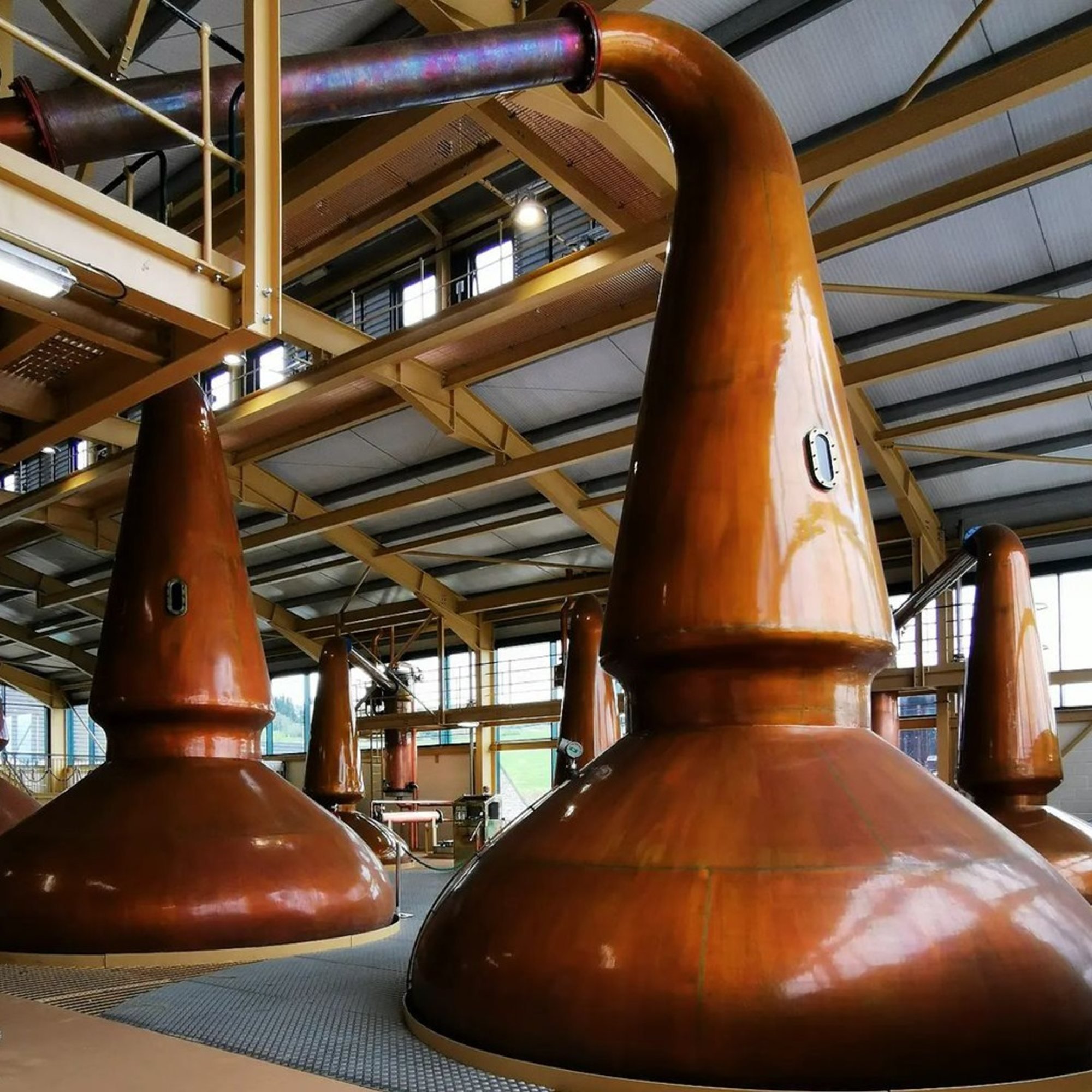
Explainer | Single malt whisky vs blended whisky: from how Scotch is distilled to ‘finishing’, a Chivas Regal master blender describes the differences
- Don’t know what sets single malt whisky apart from blended whisky? Their ingredients and the distillation process, says a Chivas Regal master blender
- With his help, we look at the different characteristics and merits of the two types, find out about ageing and learn why Speyside and Islay whiskies are special
Blended whisky and single malt whisky are two distinct categories, each with unique characteristics that are the product of their ingredients and the way they are distilled.
Single malt whisky is made exclusively from malted barley and distilled at one distillery – the term “single” refers to a single distillery, not a single batch or barrel.

Pot stills are more spherical and used to create richer, more flavourful spirits. Column stills, which typically consist of one tall cylindrical column and produce spirits more efficiently, are preferred for more neutral spirits.
Single malt whiskies tend to have a stronger taste than blended whiskies. They are celebrated for their purity and for expressing the unique production methods of a particular distillery and characteristics of a region – such as the fruitiness associated with Scotland’s Speyside region, or the peatiness of Islay, an island off Scotland’s west coast.
Everything that goes into our casks has been assessed by us. We’ve been doing that for decades now
Blended whiskies, on the other hand, can contain whiskies from various regions, and showcase the artistry of blending different malt and grain whiskies to achieve a harmonious and well-rounded flavour. Achieving this depends almost entirely on the skill of the master blender.
The ability to pick up subtle differences in flavour and the intuition to combine these flavours cannot be learned from a book or on a training course.
“It’s very much learning on the job,” Balmforth says. “The whisky and experience, how the whisky flavours interact with all the different casks.

“You’ve got to be really careful when you get to the older casks where you’ve got to have a really good wood management system because otherwise the oak starts to dry the whisky up, and you end up with something that smells great when you go to taste it, but you get quite a drying effect.”
Balmforth adds: “I’m still learning and I’ve been doing this job for 24 years. You have to put a lot of time into becoming proficient at it.
“Obviously there’s a nose in this aspect as well. You’ve got to be very good at nosing and discerning flavours and again, that is a skill you can hone.”
‘From whisky in India to Indian whisky’: domestic single malts are on a tear
Blended whiskies are known for having a consistent flavour across batches, and this consistency makes them a reliable choice for drinkers who prefer a familiar flavour.
Single malts, by contrast, can vary significantly from batch to batch because of factors such as ageing conditions and cask selection.
A blending manager’s role isn’t confined to blended whiskies.
As well as being a distiller who keeps a close eye on the casks, Balmforth is also part of the team that manages the whisky ageing process for single malts.

“We are quite hands-on and we regularly travel to all the different sites. Either me or one of my team goes up to the Glenlivet distillery in Speyside every single week and we check every new batch that’s produced that week.
“Everything that goes into our casks has been assessed by us. We’ve been doing that for decades now, so every single drop of Glenlivet has been assessed by us,” he says.
There is a lot of experience a blending manager can lend to how a single malt turns out, by switching out the whiskies to different casks that once housed other alcoholic drinks such as sherry, bourbon or port to add extra character to them. This is called cask finishing.
The New York Japanese whisky bar where a pour of Yamazaki can cost US$1,300
“For the Glenlivet 21 and 25 we did multiple finishes and it’s something we’ve pioneered. There’s quite a lot of expertise when it comes to how finishes work and making sure they don’t overpower the whisky,” Balmforth says.
The Glenlivet 21 single malt has three finishes – the blend masters switched the whisky into sherry, port and then cognac casks to add multiple layers to the finishing notes of the whisky, all the while retaining Glenlivet’s signature fruity flavour.
“The last thing we want is to overpower the signature style such as the orchard fruits like pear and banana flavours. The combination of finishes just brings this layer of flavours and it’s absolutely magnificent. The end result was probably better than I was expecting it to be,” Balmforth says.
From Scotland to Japan: the roots of a world-beating malt whisky
As for blended whiskies, one advantage of the way they are produced is that it allows the master blender to smooth out any harsh notes, resulting in a milder tasting drink.
This makes blends generally more approachable than single malts, and therefore a good entry point for those new to the world of whisky.
Also, given that creators of blended whisky don’t have the geographical limitations single malt makers do, blends are able to showcase a wider spectrum of flavours by combining, for example, the rich fruitiness of Highlands malts with the peaty notes of those from Islay.
This makes blends more versatile and suitable for various occasions – giving them broader appeal.
Whether one prefers the distinctiveness of a single malt or the versatility of a blended whisky, both categories contribute to the rich and varied landscape of the whisky world.

